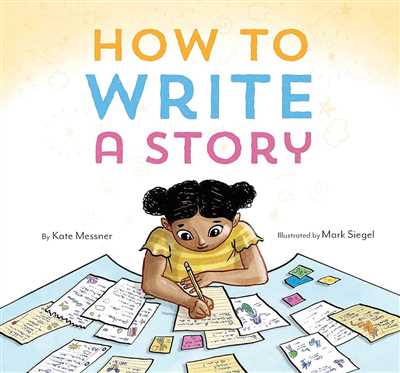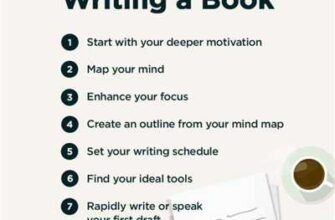
When it comes to writing a story, whether it’s a short story, a novel, or even a screenplay, one of the most important things to consider is the construction of your narrative. A well-constructed story can captivate readers, evoke emotions, and leave a lasting impact. In this article, we will explore the key elements and steps involved in constructing a compelling story.
First and foremost, it is crucial to have a single focus or idea that your story revolves around. This central focus will guide your writing and give your story a sense of direction. It could be anything – a theme, a character, a situation, or even a particular setting. For example, in Ray Bradbury’s “Fahrenheit 451,” the central focus is on the dangers of censorship and the power of books in a dystopian society. Knowing what your story is about will help you avoid unnecessary digressions and maintain a clear and concise narrative.
Once you have identified the core idea of your story, it’s time to start developing the key elements. This includes creating compelling characters, describing the setting, and constructing a well-defined plot. Good characters should feel real and relatable to the readers, with their own motivations, flaws, and growth arcs. The setting should be vividly depicted, painting a picture for the readers and immersing them within the story’s world. And the plot should follow a logical and engaging progression with clear stakes and conflict.
Another important aspect of constructing a story is the structure. Most stories follow a traditional narrative structure that includes five key parts: exposition, rising action, climax, falling action, and resolution. However, the structure can be altered or even subverted depending on the story you want to tell. For example, in a shorter story, you may want to jump straight into the action, omitting a lengthy exposition. Or, in a novel, you may choose to start with an open-ended scenario that leaves readers with questions and uncertainties.
As you start writing and drafting your story, it’s essential to be open to the editing process. Writing is a craft that involves constant revision and refinement. Even the most seasoned writers go through multiple drafts and revisions before reaching the final version. Editing allows you to fine-tune your words, enhance the pacing and flow, and ensure that every scene and detail contributes to the overall narrative. It also helps you spot any inconsistencies, plot holes, or areas that need further development.
In conclusion, constructing a compelling story is a multi-step process that involves careful planning, development of key elements, and attention to structure and editing. By knowing what your story is about, creating engaging characters, and building a well-defined plot, you can ensure that your story captures readers’ attention and leaves a lasting impact. So, whether you’re a seasoned writer or just starting out, these tips and steps can help you bring your ideas to life and create a story that resonates with your audience.
- 5 steps to help you write a story in English
- Know what a short story is versus a novel
- Start with a compelling image
- Example Fahrenheit 451 Ray Bradbury
- 3 Find the focus of your story
- Ask yourself key questions about story development
- Video:
- Story Writing | How to write a Story | Method | Examples | Exercise | Writing Skills
5 steps to help you write a story in English
Writing a story in English can be a challenging task, but with these 5 steps, you will have a clear roadmap to follow. Whether you are a beginner or an experienced writer, these steps will help you bring your ideas to life and create engaging and compelling stories.
Step 1: Find your story’s core
Start by identifying the core idea or theme of your story. This is the central concept that will drive your narrative and give it meaning. Ask yourself what message or emotion you want to convey through your story. Once you have a clear idea, you can build your story around it.
Step 2: Develop your characters and setting
The characters and setting are the key elements of any story. Take the time to create well-rounded and believable characters that your readers can connect with. Think about their backgrounds, motivations, and how they will change throughout your story. Similarly, choose a setting that enhances your story and provides a backdrop for your characters to interact with.
Step 3: Create a compelling scenario or situation
A compelling scenario or situation is what hooks your readers and keeps them engaged. Develop a problem or conflict that your characters must overcome, and think about how it will drive the plot forward. This could be an external conflict, such as a quest or mystery, or an internal conflict, such as a personal struggle or dilemma.
Step 4: Write an engaging exposition
The exposition is the opening of your story where you introduce the characters, setting, and situation. Use this section to draw your readers in and make them curious about what will happen next. Describe the key elements of your story in vivid detail, creating images that will stay with your readers.
Step 5: Focus on the development and climax
The development is where the majority of your story will take place. This is where your characters face challenges, make choices, and change as a result. As you write, keep the core idea or theme of your story in mind, and make sure each scene and event contributes to its exploration. Finally, build up to a climactic moment where all the tension and conflict culminate, leaving your readers satisfied.
Remember that writing a story is an iterative process. Once you have completed these steps, go back and edit your work. Read it aloud to yourself or have others, like friends or editors, read it and give you feedback. Pay attention to the flow and pacing, and make sure your story is coherent and engaging.
By following these 5 steps, writing a story in English will become easier and more enjoyable. Remember to be open to new ideas and don’t be afraid to make changes along the way. With practice, your storytelling skills will improve, and you’ll be able to create captivating stories that resonate with your readers.
Know what a short story is versus a novel
When it comes to writing, it’s important to know the difference between a short story and a novel. While both forms of literature have their own merits, they require different approaches and techniques from the writer.
Short stories are typically shorter in length, usually around 1,000 to 7,500 words. They focus on a single situation or scenario, often centered around a key event or conflict. The core of a short story lies in its concise and focused nature, where every word counts. In this form, writers must carefully choose their words and avoid unnecessary exposition or descriptions.
Novels, on the other hand, are longer and offer more room for development. They often range from 70,000 to 120,000 words or even more. Novels allow for a deeper exploration of characters, themes, and settings. Writers can delve into multiple storylines and subplots, building a complex and engaging world for readers to delve into.
When it comes to writing a short story, the first step is to find a compelling idea or concept. Think about the themes or messages you want to convey with your story and how they can be portrayed in a shorter format. Consider the setting, characters, and conflicts you want to explore within the limited word count.
One helpful technique is to start the story in the middle of the action, known as “in medias res.” This engages readers right away and avoids excessive exposition. For example, Ray Bradbury’s “Fahrenheit 451” opens with the line, “It was a pleasure to burn,” immediately immersing readers in a scenario where books are banned and burned.
Another important aspect is to define the core of your story. What is the key situation or conflict that your characters will face? This will help you stay focused and avoid unnecessary tangents. Ask yourself what your story is really about and make sure every word contributes to that central idea.
Short stories also require careful editing. With a limited word count, every sentence must serve a purpose. Cut out any unnecessary details or descriptions that don’t contribute to the core of the story. In this way, you can ensure that your story remains concise and impactful.
In conclusion, writing a short story is a different process than writing a novel. By understanding the differences in length, focus, and structure, you can better approach the task. Ask yourself key questions about your story’s core, find a compelling idea, and make every word count. With practice and persistence, you’ll find that writing shorter stories can be just as rewarding as writing longer novels.
Start with a compelling image

When it comes to writing a story, one of the most important steps is to start with a compelling image. This image will serve as the core of your story, driving the plot and enticing readers to continue reading.
But what exactly makes an image compelling? It should be a single visual that sparks questions and curiosity in the reader’s mind. It should make them want to know more, to find out what happened and why. This image can be a description of a setting, a scenario, or even a character. It should be something that sets the stage for your story and hooks the reader from the very beginning.
For example, in Ray Bradbury’s Fahrenheit 451, the novel opens with the image of a firefighter burning books. This single image raises a multitude of questions: why are the books being burned? What changed in society to lead to this scenario? It immediately sets the tone and themes of the novel and creates a sense of urgency and intrigue.
As a writer, starting with a compelling image can help you focus your story and make the writing process easier. Instead of trying to describe everything about your story’s world and characters from the beginning, you can start with a powerful image and let the details unfold naturally as you write.
When editors read stories, they are often looking for that one key image that captures their attention. They want to see something unique and different, something that sets your story apart from others. Starting with a compelling image can help you stand out and make a memorable impression.
It’s important to note that starting with a compelling image doesn’t mean you must begin with the exposition or background information. In fact, it’s often better to avoid starting with a long exposition that describes the world and characters in detail. Instead, start with the action or a significant moment that will grab the reader’s attention and draw them into the story.
By starting with a compelling image, you can also help yourself stay focused on the core of your story. It’s easy to get lost in the development and details, but the key image will serve as a reminder of what your story is truly about. It’s like a compass that helps you navigate through the writing process and stay on track.
So, the next time you sit down to write a story, start by asking yourself: “What is the most compelling image that captures the essence of my story?” This image will be the foundation upon which your story is built, and it will make the writing process more enjoyable and engaging.
Example Fahrenheit 451 Ray Bradbury
Ray Bradbury’s “Fahrenheit 451” is a compelling novel that explores the themes of censorship and the power of books. In this dystopian scenario, the story takes place in a future society where books are banned and burned. The main character, Guy Montag, is a fireman whose job is to start these fires and destroy all printed materials.
The story begins with an exposition that describes the setting and the situation of the characters. Bradbury uses vivid and descriptive language to paint a vivid image of this futuristic world. Within this setting, the story’s core themes are developed through the experiences of Guy Montag as he starts to question his role in society and the value of books.
The development of the story is driven by Montag’s transformation. As he encounters a group of rebels who memorize books and share them orally, he begins to see the power and importance of literature. This conflict between the oppressive society and the rebels becomes the central focus of the story.
As a writer, it is important to find the key themes and ideas that will make your story compelling. In “Fahrenheit 451,” the main idea is the clash between the power of books and the suppression of knowledge. Thus, when starting your own story, ask yourself what themes or ideas you want to explore and how they can be developed within the plot.
One approach to construct a story is to start with a single compelling idea or image. This can help you to create a strong opening that grabs the reader’s attention. In “Fahrenheit 451,” Bradbury starts with the image of books being burned, which immediately sets the tone for the rest of the story.
Another step to consider is the development of your characters. In “Fahrenheit 451,” Montag’s transformation is the driving force behind the narrative. By creating well-rounded and relatable characters, you can draw readers into your story and help them to connect with the plot.
Shorter words and sentences can help to make your story more accessible, especially for readers who are not native English speakers. Avoid using complex language or technical jargon that may confuse or alienate your audience. Editors can also help you to polish your writing and ensure that it flows smoothly.
The editing process is a crucial part of writing a story. It is through editing that you refine your ideas, clarify your message, and improve the overall structure and flow of your narrative. Don’t be afraid to make changes or remove sections that don’t contribute to the story’s core themes.
In conclusion, studying Ray Bradbury’s “Fahrenheit 451” can provide valuable insights into the development of a compelling story. By understanding the key elements of a story, the themes, and the process of starting and editing, you can enhance your own storytelling skills and create engaging narratives.
3 Find the focus of your story
When it comes to writing a story, it is important to find the focus or main idea that will drive your narrative. This focus will help you develop your characters and shape the direction of your plot.
One way to find the focus of your story is by asking yourself what themes or ideas you want to explore. For example, in Ray Bradbury’s novel “Fahrenheit 451,” the focus is on the dangers of censorship and the power of books. By knowing the core focus of your story, it becomes easier to avoid going off on tangents and to stay on track with your storytelling.
Another way to find the focus of your story is by defining the key scenario or situation that your characters find themselves in. By starting with a single idea or image, you can develop your story around this focal point. This can be especially helpful when you are writing a shorter story, as it allows you to make every word count.
When finding the focus of your story, it is essential to consider the setting or the world within which your story takes place. The setting can often help shape the focus of your story by providing a backdrop and context for your characters and their actions. It can also create a compelling atmosphere that draws readers in.
Asking yourself questions about your story’s focus can also be beneficial. What is the most compelling aspect of your story? What is the core idea or message that you want to convey to your readers? By asking these questions, you can narrow down the focus and ensure that every aspect of your story aligns with it.
Once you have found the focus of your story, it is important to edit and refine your writing to ensure that the focus is clear and consistent. This may involve cutting out unnecessary scenes or characters that do not contribute to the main focus. By doing so, you can create a more cohesive and impactful story.
In summary, finding the focus of your story is key to its development. By knowing what your story is about and staying true to that focus, you can create a more compelling and engaging narrative.
Ask yourself key questions about story development
When starting to develop a story, it’s important to ask yourself key questions that will help guide you through the process. These questions will help you get to know your story and its core elements, such as the setting, characters, and plot. Here are 5 important questions to ask yourself:
- What is the main idea or theme of your story?
- Who are your main characters and what are their goals?
- Where does your story take place and how does the setting impact the events?
- What is the starting situation or scenario that sets the story in motion?
- What are the key events and conflicts that will drive the story forward?
By asking yourself these questions, you can begin to form a clear image of your story and its development. For example, if you’re writing a short story based on Ray Bradbury’s “Fahrenheit 451,” you might ask yourself:
- What themes and ideas from the novel do you want to focus on?
- How can you make the story more compelling or even change certain aspects?
- What words or descriptions can you use to vividly describe the dystopian world?
- Are there any new characters or situations you want to introduce?
- How can you avoid the exposition and get right into the core of the story?
As a writer, it’s important to know the answers to these questions in order to create a well-developed and engaging story. They can help you find your story’s direction and guide you through the writing process. Remember, the shorter and more focused a story is, the easier it is to edit and convey your ideas to your readers.









